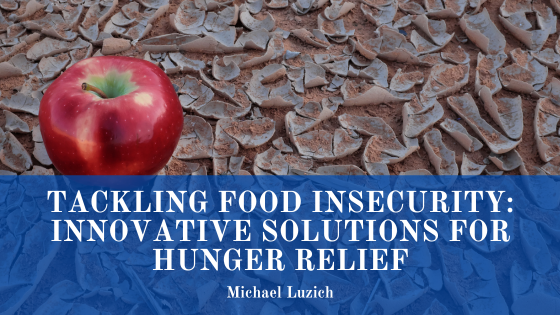Food insecurity remains a pressing global issue, affecting millions of individuals and families worldwide. In the face of this challenge, innovative solutions are crucial to ensure sustainable hunger relief. From leveraging technology to community-driven initiatives, various approaches are emerging to comprehensively address food insecurity.
Technological Interventions:
One innovative solution to tackle food insecurity involves harnessing the power of technology. Mobile applications are being developed to connect surplus food from various places like restaurants and grocery stores to local food banks or directly to individuals in need. This streamlined approach minimizes food waste while efficiently redistributing excess resources to those who require them the most. Additionally, online platforms are being used to coordinate volunteer efforts, making it easier for communities to come together and address local hunger issues.
Vertical Farming and Sustainable Agriculture:
Traditional agriculture faces numerous challenges, such as climate change and limited arable land. However, vertical farming is emerging as a sustainable solution to produce food more efficiently. By utilizing vertical spaces and employing innovative growing techniques, these farms can produce a significant amount of fresh produce in urban environments. This not only ensures a more stable and diverse food supply but also reduces transportation costs and the carbon footprint associated with food distribution.
Community-Led Initiatives:
Community-driven initiatives play a vital role in the fight against food insecurity. Community gardens, for instance, empower individuals to grow their own food, fostering a sense of self-sufficiency and community connection. Furthermore, farmers’ markets and food cooperatives create avenues for local producers to sell their goods to consumers, cutting down on middlemen and ensuring fair compensation for growers.
Educational Programs:
Addressing food insecurity requires not only immediate relief but also long-term solutions. Educational programs that focus on nutrition, budgeting, and sustainable food practices equip individuals and communities with the knowledge needed to make informed decisions about their food choices. Schools, community centers, and online platforms can serve as valuable resources for disseminating this essential information.
Public-Private Partnerships:
Collaboration between the public and private sectors is instrumental in implementing effective solutions. Governments, businesses, and non-profit organizations can all look at how to work together to create policies that support sustainable agriculture, allocate resources to food banks, and invest in research and development of innovative technologies. By fostering these partnerships, it becomes possible to pool resources and expertise, creating a more robust and coordinated response to food insecurity.
Tackling food insecurity requires a multi-faceted approach that combines technological advancements, sustainable agriculture practices, community engagement, education, and collaborative efforts between different sectors. By embracing innovative solutions, we can not only provide immediate relief to those in need but also work towards creating a more resilient and food-secure future for all. As individuals, communities, and organizations come together, we can make major, impactful strides in the fight against hunger, ensuring that everyone has access to nutritious and sufficient food resources.

